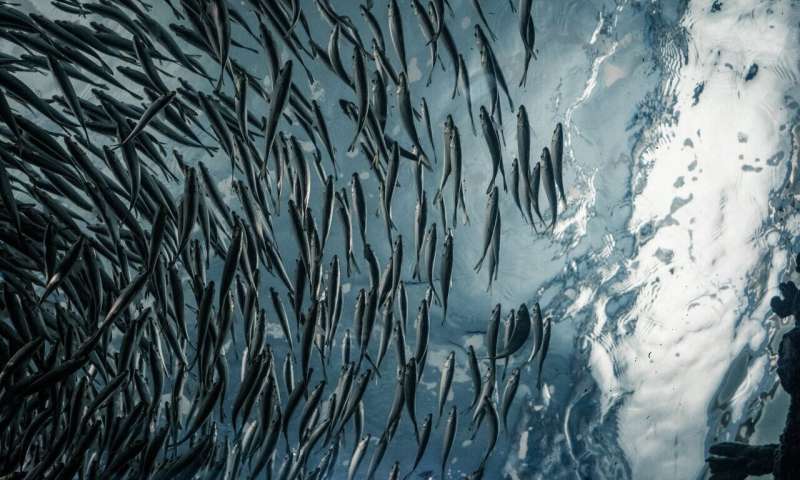Credit: Unsplash/CC0 Public Domain
Another summer fish kill hit Biscayne Bay over the holiday weekend as oxygen-starved waters appeared to smother dozens of fish, the latest indicator of a pollution problem Miami-Dade County needs to fix.
The scope of this fish kill isn't known, with environmental groups, academics and county crews on the bay Monday to search for more dead fish and obtain detailed readings on oxygen levels and other indicators of water quality.
A county spokesperson said Miami-Dade's environmental arm was aware of hundreds of dead fish on the eastern side of the bay off Miami Beach. Miami Waterkeeper, which documented more than 27,000 dead fish in the August 2020 fish kill that was the worst in recent memory, said it received reports of four different spots of dead fish on Monday.
The recent days of high temperatures and low wind speeds had bay watchers on alert for dead fish, since the combination makes it more likely pollutants like fertilizer, pet waste and septic-tank discharge will cause algae to grow more than usual, blocking sunlight for oxygen-producing sea grass as well as sucking up the oxygen fish need to breathe.
"It's not unexpected," said Rachel Silverstein, executive director of Miami Waterkeeper. "We started getting signs early last week that temperatures were high and the wind was low. We had reports of fish swimming at the surface, which is a sign that oxygen levels are low."
Silverstein said she didn't think this fish kill compared in size to the August 2020 kill, when an abnormally high influx of polluted water from the Little River Canal worsened the normal challenges of summer weather on fish. But Silverstein said the warning remains the same when an unusual number of fish turn up dead: The Miami area is polluting Biscayne Bay to the point that the ecosystem is failing.
"There's way too much nutrient pollution getting into the bay," Silverstein said. She sees septic tanks as the top problem, with sea level rise eroding the buffer that's supposed to exist between an underground tank of human sewage and ground water that feeds into the bay. "We're just basically flushing our toilets into the water table," she said.
Miami-Dade still allows construction of new septic tanks, and has not taken major steps to curb groundwater pollution, which would require an overhaul of the storm-drain system. In April, Miami-Dade commissioners changed county law to ban use of fertilizer on residential lawns during the summer rainy season and imposed new fertilizer rules on farms.
Tere Florin, spokesperson for the county's Division of Environmental Resources Management, said county workers initially saw about two dozen dead fish near 79th Street in the Normandy Shores area. But as more reports came rolling in throughout the day, the agency realized the fish kill was more widespread than initial reports suggested. Florin said the dead fish were mostly found on the eastern side of the bay, and stretching south from the Normandy Shores area.
Fernando Fiksman said he discovered hundreds of dead fish around his bayfront home on Miami Beach's Biscayne Point around 7:30 a.m. Monday. "The smell was so strong," he said.
©2021 Miami Herald.
Distributed by Tribune Content Agency, LLC.























